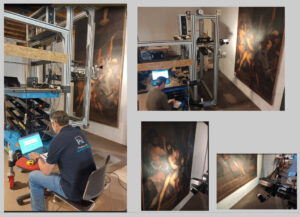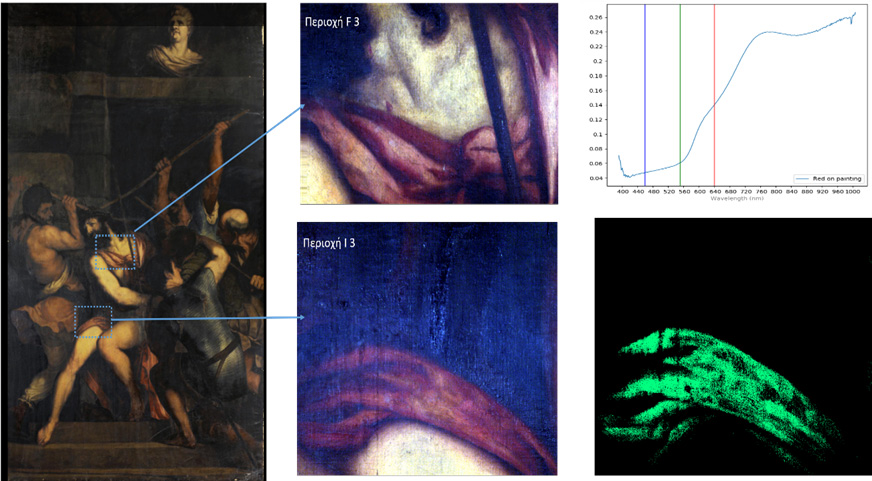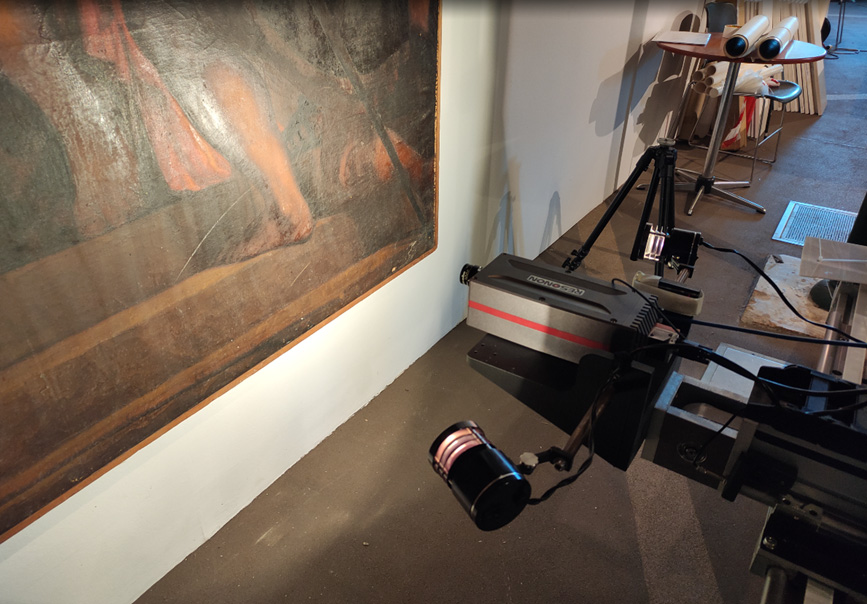Diffuse Reflectance Spectroscopy is based on the study of light that is backscattered by the surface under examination. In particular, a beam of white (i.e. broad spectrum) light is incident on the surface of the object under study and is subsequently scattered within the material or absorbed depending on the material. Part of the radiation is eventually backscattered into space. This phenomenon is called diffuse reflection and the collection and recording of this radiation can provide valuable information about the material that caused it because of its interaction with the material.
In particular, in the case of paintings, Diffuse Reflectance Spectroscopy helps to differentiate/identify the pigments present on the painting surface. Each pigment has its own characteristic diffuse reflectance spectrum, which is the ‘fingerprint’ of the pigment. The comparison of standard pigment spectra with the spectra extracted from the area under study leads to the identification of the pigments in the painting and their mapping in order to determine their extent. A prerequisite for the application of the technique is the use of appropriate white light sources emitting over the whole spectral range that the monochromator can analyse and the calibration of the device using an appropriate calibration target.
Diffuse Reflectance Spectral Imaging is a technique that exploits the phenomenon of diffuse reflection to study materials on a surface. Backscattered light is collected by an objective lens and analysed, with the aid of a single monochromator, into narrow parts of the electromagnetic spectrum (1-5 nm range) and recorded using a camera sensor. The result is a three-dimensional representation called a spectral cube, which includes two spatial dimensions and one spectral dimension. Selecting a specific pixel or group of pixels (and correspondingly an area of interest on the surface under consideration) and recording the variation of the intensity value along the spectral dimension allows the extraction of the Diffuse Reflectance Spectrum which can provide information about the material under study. Due to the spatially two-dimensional recording, the technique is widely applied to large surfaces such as paintings.
Features
● Illumination of the point of interest with a source radiating in the visible (400-700 nm) and/or near infrared (700-1700 nm).
● Collection of backscattered radiation by means of an infrared camera.
● Spectral analysis of the image.
● The variation of the intensity value for a pixel along the spectral cube outputs the diffuse reflectance spectrum.
● The spectrum is associated with a specific material.
Application
It is applied to pigments, inorganic and organic.
● Identification. The diffuse reflectance spectrum is compared with standard spectra of known pigments in order to identify the standard spectrum that matches the spectrum extracted from the measurement. It requires the existence of a database of standard diffuse reflectance spectra, which can be generated by combining standard spectra found in the literature together with measurements of standard dyes in the laboratory.
● Differentiation. A comparison is made between the extracted diffuse reflectance spectra from different points/areas of the painting with pigments of similar hue. Possible differentiation in the fluorescence spectra corresponds to the use of different pigments for these areas.




